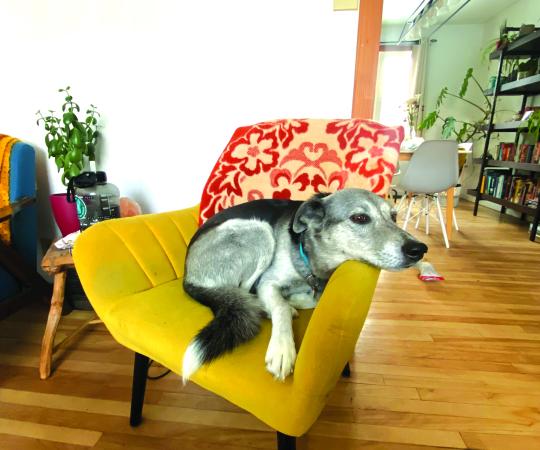Want to develop the agility to hop over cracks in the ice? Want to train your knuckles to withstand the freezing pain of creeping up to a seal hole on the ice? Practise the Inuit high kick and the knuckle hop several times a day, and you might be ready.
There are over 300 Inuit games, and “they seem easy at first,” says Donald Kuptana, who’s taught them for decades in Inuvik, NWT. But the strength, agility and pain-endurance exercises force the body to be prepared for the elements—which means they’re deceptively tough.
They’re also inclusive, creating challenges for all ages and genders. Take the wrist hang, where the player holds onto a stick with one hand, and clasps their wrist with the other, engaging their core and arm strength to keep their body suspended at least two inches off the ground. “A two-year-old can do it,” says Kuptana. A few years ago, he also watched a 66-year-old woman destroy the competition doing a move known as The Airplane.
While the games may not resemble mainstream sports, coaches should probably consider incorporating them into their training regimens. “When I’ve seen some of our athletes going into hockey or into basketball, because they’ve played the Northern games, their bodies are stronger,” says Kuptana.

The high kick
One-foot high kick: Take off from both feet, kick a suspended target with one foot, and land on the same foot you kicked with, without losing your balance.
Two-foot: Take off from both feet, kick the target with both feet, land on both feet. What it’s good for: This agility move works major muscle groups such as the calves, quadriceps, and abdominal muscles.
Records: 2.9 metres, set by Alaskans Brian Randazzo (1988) and Jesse Frankson (2002) in the one-foot category. Alice Strick of Alaska jumped 2.29 metres in the one-foot high kick in 2012, the latest record in the open female category. Randazzo set the record for the two-foot high kick in 1988 at 2.64 metres; Nicole Johnston’s 1.96-metre set the women’s record in 1994.










